Passages excerpted from Mimi Sheraton’s 1,000 Foods to Eat Before You Die—the ultimate gift for the food lover in your life. #BooksMakeGreatGifts.
Buy the Book
Amazon | B&N | Indiebound | Workman
Hannukah, also known as the Festival of Lights, has its roots in the second century b.c., when the Romans besieged a group of Jews known as the Maccabees. Determined to die in rebellion rather than be captured, they faced the problem of repairing their desecrated temple without enough oil to light the lamps during rebuilding. Enter a miracle: a tiny jar of oil that lasted eight days and nights, long enough to obtain more oil and restore order.
On Hanukkah, Jews commemorate that remarkable event by frying foods in oil—chiefly latkes for Ashkenazic Jews, and the crullers known as sufganiyot for the Sephardim. Learn more about these traditional Hannukah treats (and where to find them) below.
Sufganiyot (Jelly-filled Doughnuts)
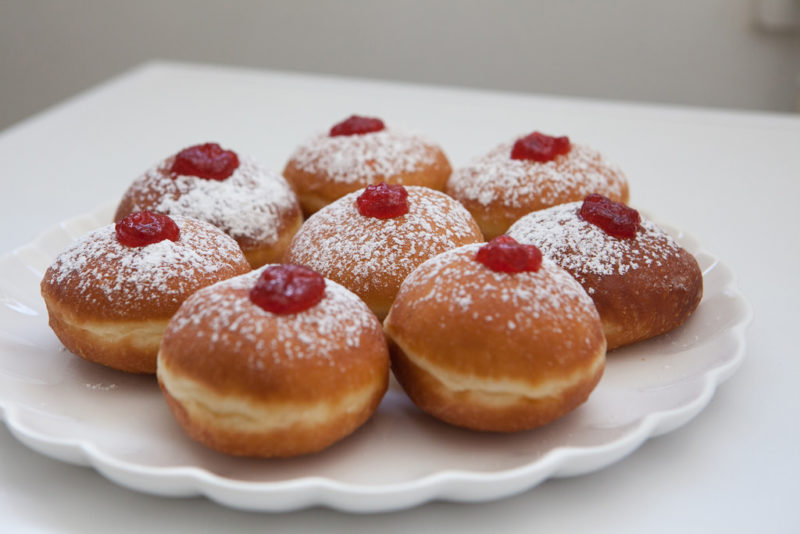
A sufganiyah is a sponge, and the plump and cheery, jelly-filled doughnuts are spongy indeed, fried (just like latkes) to golden-brown perfection in the hot vegetable oil that brings symbolic significance to these two holiday specialties.
Sufganiyot are so popular in Israel that during the weeks leading up to the eight nights of Hanukkah, the city’s largest commercial supplier bakes more than a quarter of a million a day. They’re traditionally filled with apricot or raspberry jam, but modern bakeries stuff them with all sorts of fillings—among them the currently popular Latin-inspired dulce de leche.
Where: In Israel, Angel Bakeries at various locations, angel.org.il/branches_en.aspx; in New York, Breads Bakery, tel 212-633-2253; in Los Angeles, Eilat Bakery at two locations; in Lenox and Great Barrington, MA, Haven Café, tel 413-637-8948; in Teaneck, NJ (and by mail order), Butterflake Kosher Bakery of Teaneck, tel 201-836-3516. Further information and recipes: Jewish Holiday Cookbook by Joan Nathan (2004); The Book of Jewish Food by Claudia Roden (1996)
Latkes (Potato Pancakes)
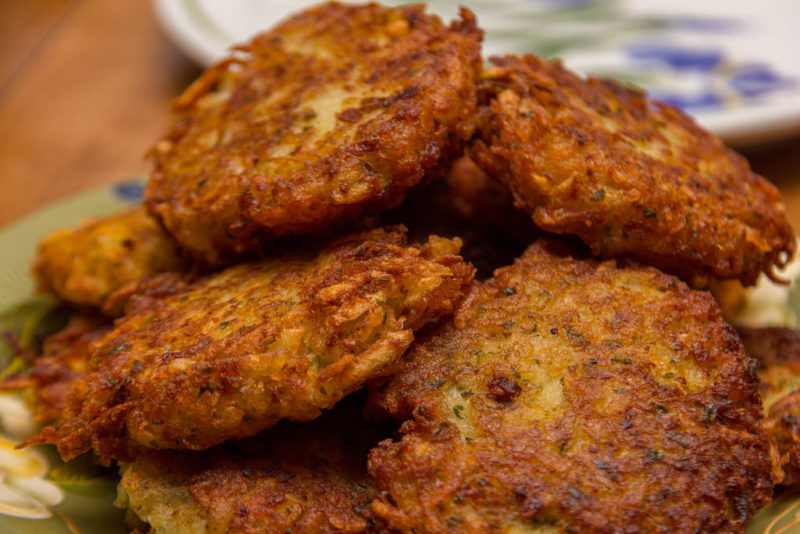
Golden and crunchy on the outside, soft, tender, and oniony on the inside, fried potato pancakes—or latkes, as they’re called in Yiddish—are the highlight of the Ashkenazic Jewish holiday of Hanukkah.
Potato latkes are distinctive for their oniony, salty goodness. There are several secrets to turning out an ideal one, which will taste something like hashbrowns, French fries, and potato chips, all rolled into a single addictive disk. First, the potatoes should be grated on a traditional box grater (a food processor is only a fair substitute, turning out watery shreds), alternating with onions; this keeps the grated potato from darkening and ensures that the onion and potato are thoroughly combined. Second, this is one time to throw precaution to the wind and opt for Crisco shortening, the very best fat for crisp and clean, flavorless frying. If you can’t muster up the courage, rely on corn oil, the next best frying medium. Once fried, latkes should be drained on paper towels, and they may be held uncovered on a rack in a 375ºF oven for about 20 minutes.
Naturally, latkes engender arguments among proprietary cooks and their offspring. Thick, with a lovely, pulpy and savory interior, or thin and all crackle, with virtually no soft insides? And what garnish?
Fresh, homemade applesauce seasoned with cinnamon and served at room temperature is the best answer, although many opt for sour cream, a cold and overpowering mistake. If mini-latkes are to be passed at cocktail hour, a dab of red or black caviar, or minced smoked salmon and a tip of sour cream are excellent amendments.
Where: In New York, Sammy’s Roumanian Steakhouse, tel 212-673-0330; Russ & Daughters, tel 212-475-4880; in Houston, Kenny & Ziggy’s New York Delicatessen, tel 713-871-8883; in Boynton Beach, FL, Flakowitz, tel 561-742-4144; in San Francisco, Suppenküche, tel 415-252-9289. Special event: Annual Latke Festival, Brooklyn Academy of Music, Brooklyn, NY, December.

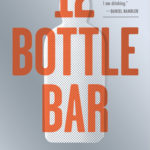
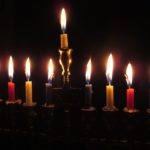
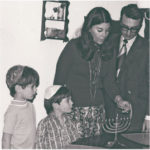
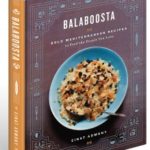
No Comments